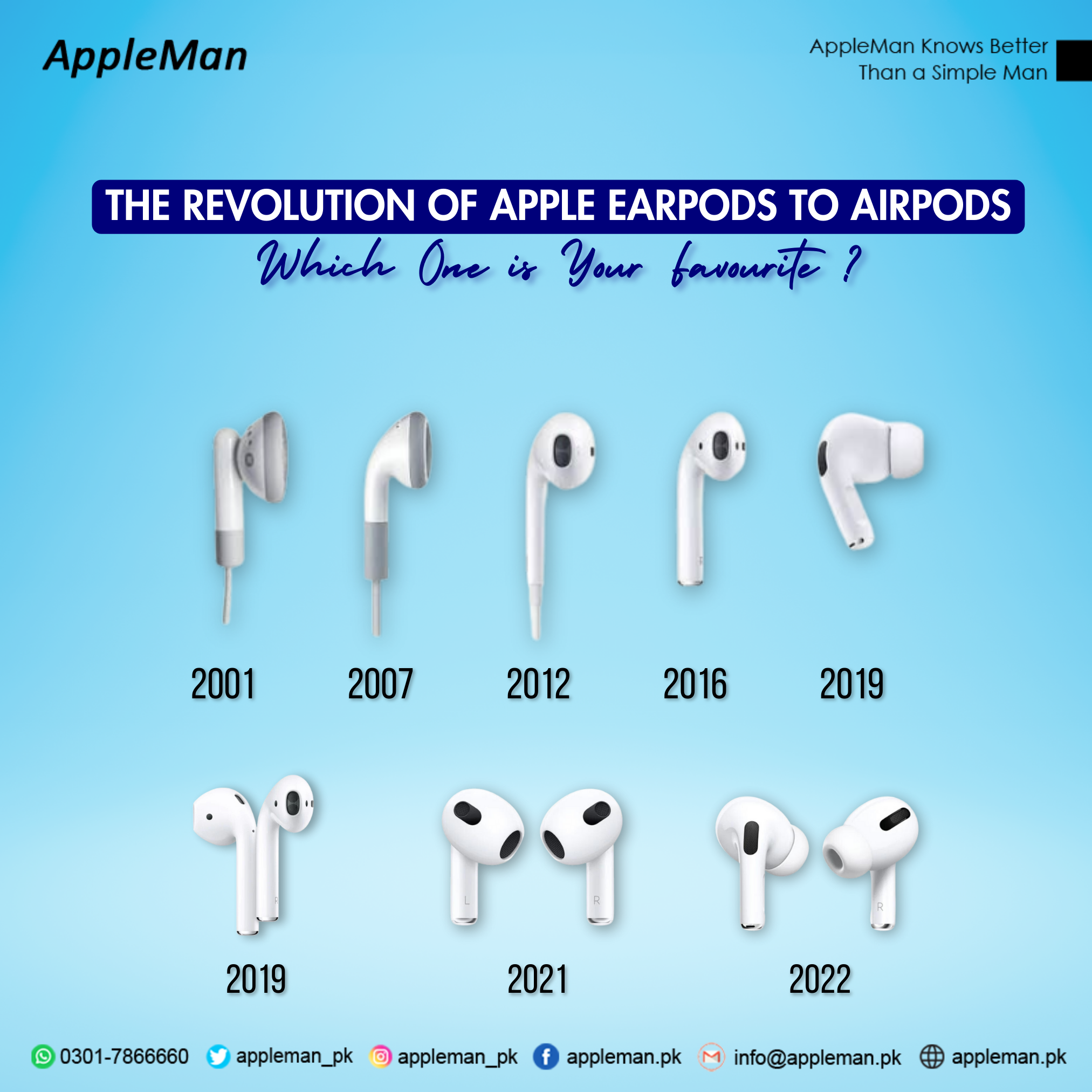The Revolution of Apple EarPods to AirPods
A New Era of Wireless Audio
In the ever-evolving landscape of consumer electronics, Apple has established itself as a pioneer, consistently pushing the boundaries of innovation. One such groundbreaking product evolution is the transition from Apple EarPods to AirPods.
With this shift, Apple ushered in a new era of wireless audio technology, revolutionizing the way we experience sound. In this blog post, we will delve into the transformative journey of Apple's earphones, exploring the significant advancements and features that have propelled AirPods to the forefront of the audio industry.
-
Seamless Wireless Connectivity:
AirPods represent a paradigm shift in audio consumption by eliminating the hassle of tangled wires and connectors. Launched in 2016, the first-generation AirPods introduced a seamless wireless experience, utilizing Bluetooth technology to establish a stable and efficient connection with Apple devices.
This wireless convenience, coupled with the effortless pairing process enabled by the Apple H1 chip, offered users a liberating audio experience.
-
Revolutionary Design:
One cannot discuss the transition from EarPods to AirPods without acknowledging the iconic design that sets them apart. With their sleek, minimalistic aesthetic, AirPods not only redefined the concept of wireless earphones but also became a fashion statement. The distinctive elongated stem, featuring intuitive touch controls, allows users to interact with their devices effortlessly.
Moreover, the design includes sensors that detect when the AirPods are placed in the ears, automatically pausing playback when removed, further enhancing user convenience.
-
Seamless Integration with Apple Ecosystem:
A standout feature of AirPods lies in their seamless integration within the Apple ecosystem. Utilizing the power of iCloud, AirPods seamlessly sync across all Apple devices, making it effortless for users to switch between their iPhone, iPad, Apple Watch, and Mac. Additionally, the integration with Siri allows users to perform a range of tasks through voice commands, such as making calls, changing tracks, or adjusting volume, without needing to take their devices out of their pockets.
-
Enhanced Audio Quality:
The transition from EarPods to AirPods brought substantial improvements in audio quality. With custom-designed drivers and an optimized audio architecture, AirPods deliver rich, immersive sound with enhanced clarity and depth. Furthermore, the introduction of active noise cancellation technology in AirPods and AirPods Pro allows users to immerse themselves in their audio while blocking out external disturbances.
-
Extended Battery Life:
Apple focused on improving the battery life of its wireless earphones, a crucial aspect for users on the go. The second-generation AirPods and AirPods Pro offered significant battery life enhancements over their predecessors, providing users with hours of uninterrupted listening pleasure. The inclusion of a wireless charging case further streamlined the charging process, offering added convenience and eliminating the need for tangled cables.
-
Constant Innovation and Upgrades:
Apple's commitment to continuous improvement is evident in its dedication to refining the AirPods lineup. Regular firmware updates bring new features and performance enhancements to existing AirPods, ensuring that users always have access to the latest advancements.
This dedication to innovation has solidified AirPods position as the preferred choice for wireless audio enthusiasts.
The transition from Apple EarPods to AirPods represents a pivotal moment in the evolution of wireless audio technology.
With their seamless wireless connectivity, revolutionary design, and seamless integration within the Apple ecosystem, AirPods have redefined our audio experience. Through enhancements in audio quality, extended battery life, and continuous innovation, Apple has further solidified its position as a trailblazer in the industry.
As we eagerly await the next generation of AirPods, it is evident that Apple's commitment to pushing the boundaries of wireless audio will continue to shape the future of sound.



